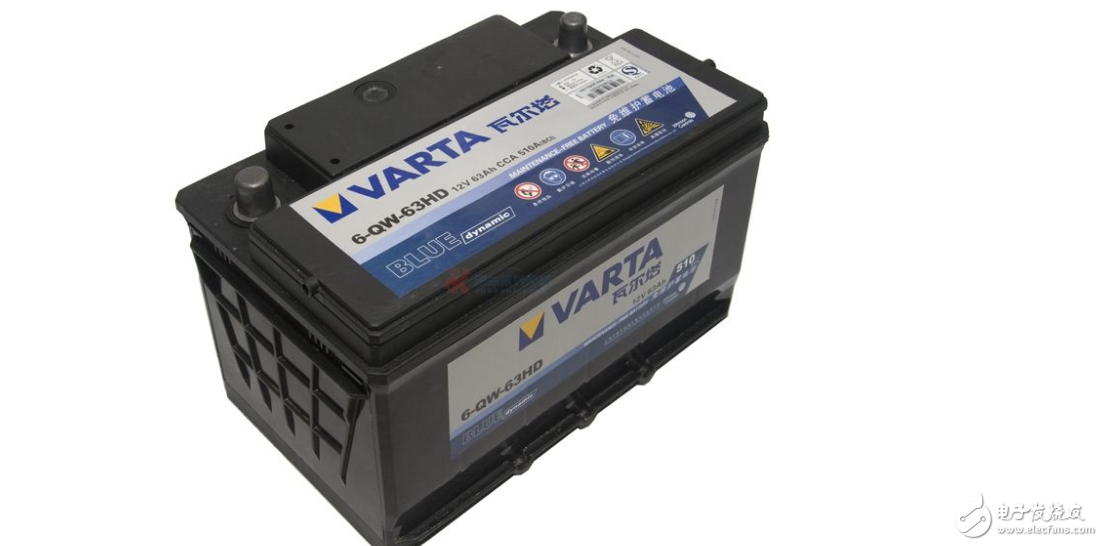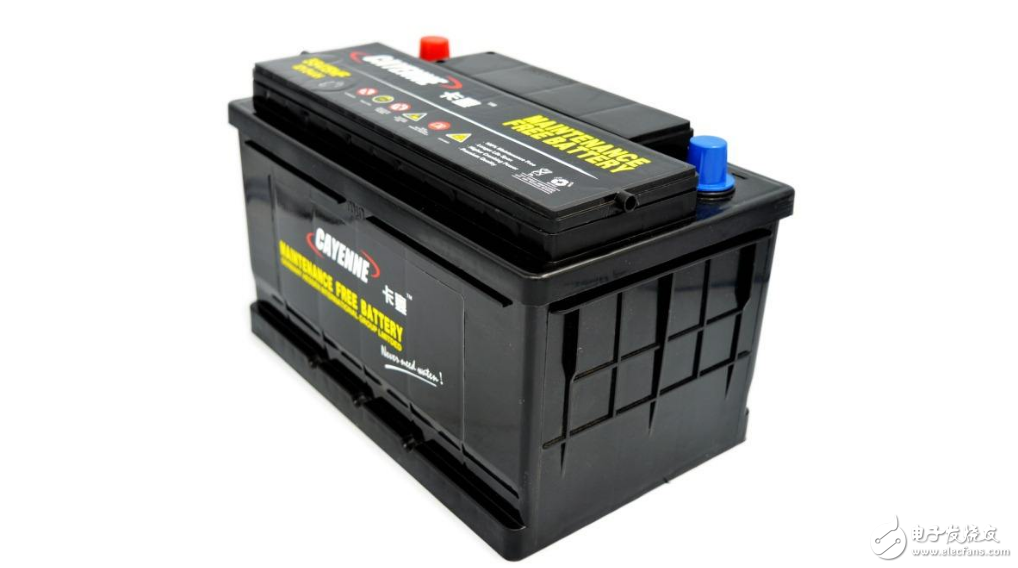The sealed maintenance-free battery adopts the latest design of the fully sealed structure and modern production process in the 1990s. It provides high performance, long life, pollution-free, maintenance-free, safe and reliable performance. When charging, electrical energy is converted into chemical energy, which is converted into electrical energy when discharged. When the battery is discharged, the metal lead is a negative electrode, which undergoes an oxidation reaction and is oxidized to lead sulfate; the lead dioxide is a positive electrode, and a reduction reaction occurs, and is reduced to lead sulfate. When the battery is charged by direct current, the two poles respectively produce lead and lead dioxide. After removing the power supply, it returns to the state before discharge, forming a chemical battery with internal dynamic balance. A lead storage battery is a battery that can be repeatedly charged and discharged, and is also called a secondary battery. The reaction chemical equation of lead-acid battery is as follows: discharge→PbO2+2H2SO4+Pb≒PbSO4+2H2O+PbSO4â†Charging The general battery lead-acid battery is composed of a positive and negative plate, a separator, a casing, an electrolyte and a wiring pile head. The chemical reaction of the discharge depends on the active material of the positive electrode plate (lead dioxide and lead) and the active material of the negative electrode plate. (Sponge-like pure lead) is carried out under the action of an electrolyte (dilute sulfuric acid solution), wherein the grid of the plate is made of lead-bismuth alloy for the conventional battery, and the maintenance-free battery is made of lead-calcium alloy, the former uses 锑, the latter With calcium, this is the fundamental difference between the two. Different materials will produce different phenomena: the traditional battery will reduce the liquid during use, because the flaw on the grid will contaminate the sponge-like pure lead on the negative plate, which will reduce the reverse of the battery after full charge. The electromotive force causes excessive decomposition of water, and a large amount of oxygen and hydrogen escape from the positive and negative plates, respectively, and the electrolyte is reduced. By replacing the strontium with calcium, the back electromotive force of the fully charged battery can be changed, the overcharge current is reduced, and the liquid vaporization speed is reduced, thereby reducing the electrolyte loss. Since the maintenance-free battery adopts a lead-calcium alloy grid, the amount of water decomposition generated during charging is small, the evaporation of water is low, and the sealed structure of the outer casing is used, and the sulfuric acid gas released is also small, so that compared with the conventional battery, It has the advantages of no need to add any liquid, less corrosion to the wiring pile head and wire, strong anti-overcharge ability, large starting current and long storage time. The maintenance-free battery has only a small amount of gas generated by the electrolyte under normal charging voltage. The plate has strong anti-overcharge capability, and has the characteristics of small internal resistance, good low-temperature starting performance and longer service life than conventional batteries. Therefore, it is not necessary to add distilled water during the whole use period, and in the normal case of the charging system, it is not necessary to perform supplementary charging from the removal. However, the specific gravity of the electrolyte should be checked during maintenance. Most maintenance-free batteries have a hole-shaped liquid (temperature-compensated) hydrometer on the cover that changes color depending on the specific gravity of the electrolyte. It can indicate the storage state of the battery and the height of the electrolyte level. When the indicator eye of the hydrometer is green, it indicates that the charging is sufficient, the battery is normal; when the indicator eye green point is little or black, it indicates that the battery needs to be charged; when the indicator eye shows light yellow, it indicates that the battery is faulty inside and needs to be repaired or Replace it. When conditions permit, the maintenance-free battery can be charged with a charging device with current-voltage characteristics. The device ensures sufficient power and avoids overcharging and consumes more water. Generally, such maintenance-free batteries can be stored for 10 months from the factory to the use, and the voltage and capacitance remain unchanged. The voltage and capacitance of the poor quality will decrease after about 3 months from the factory. If you choose to leave the production date for 3 months at the time of purchase, you can check whether the voltage and capacitance of the battery meet the requirements of the manual on the spot. If the voltage and capacitance are reduced, the material inside is not good, then the battery The quality is definitely not good. It may be that the water battery is disguised after being charged by the dealer. Compared with ordinary lead-acid batteries, maintenance-free batteries are mainly used in the material of the battery grid, which has high strength, good welding performance and easy casting. The material of ordinary lead-acid batteries should be added with about 7% to 8% of bismuth.锑In the chemical reaction, the positive electrode plate is continuously deposited on the negative electrode plate, and the active material on the negative electrode plate constitutes a local battery, causing self-discharge, resulting in a decrease in the voltage of the battery terminal, which intensifies the decomposition of water during charging, thereby reducing performance and shortening the service life. , need to continue to maintain. In order to solve this problem, people use lead-calcium alloy instead of lead-bismuth alloy to make the grid frame, reduce the content of antimony (about 1% to 2%), and then add a small amount of copper, arsenic, tin, selenium and other elements to keep Its strength and welding and casting properties. This maintenance-free battery with new materials and new technology reduces the content of antimony, has less self-discharge, long capacity retention time, less corrosion of the terminal, and encloses the positive electrode plate with a polyvinyl chloride separator to prevent the active material from falling off. Thereby the self-discharge phenomenon is further prevented. The maintenance-free battery also adopts a structure that can reduce the evaporation and exhaust structure of the electrolyte, and has a strong overcharge resistance, so that the amount of electrolysis is greatly reduced, and it is generally unnecessary to add distilled water during normal use. CCA is the cold start current value, and the specific data can be obtained by the battery tester. The so-called cold start current CCA value refers to the current value that the battery can output at a specified low temperature state (usually specified at 0 °F or –18 °C). The concept was introduced to focus on assessing the discharge capacity of the battery, thus ensuring a reliable and authentic indication of the use of the starter to see the "110Ah/450A" mark, which means that the starter can be in the –18 ° C environment The 110Ah battery with a cold start current CCA of 450A is used to satisfy the engine cold start test. If we only notice the capacity of the battery is 110Ah and ignore the cold start current capability, the engine cold start test is carried out according to the same specifications. Our test is likely to fail. The result is that the starter manufacturer may be required to replace the higher level. Power level starter products, or increase the capacity of the battery to solve the cold start problem. This is because the current manufacturing level of China's battery and the international level difference, the cold start current of China's 110Ah battery is 370A ~ 400A, foreign 110Ah battery with 450A cold start current is equivalent to our 150 ~ 160Ah battery. Therefore, the cold start current value CCA is gradually introduced to regulate the engine cold start test and the selection of the battery. It is imperative for China's automobile industry to fully approach the international standard. Box Header Connector,Vertical Type Box Header Connector,Dip Vertical Type Box Header Connector,Double Row Box Header Connector Shenzhen CGE Electronic Co.,Ltd , https://www.cgeconnector.com
